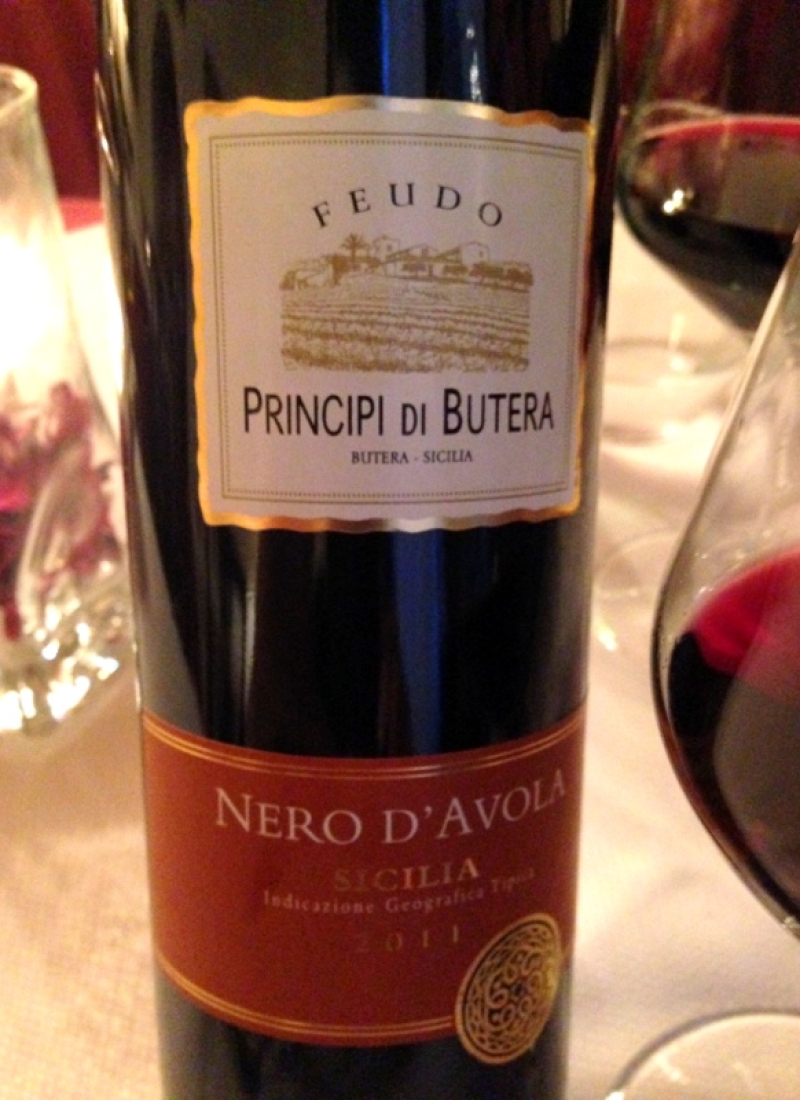Ortigia Food and Wine: A Window into the Sicilian Heart, Part 3 of 4
All photography by Stephen B. Chambers Architects, Stephanie Chambers
Perbacco Restaurant’s chef, like most coastal Sicilian chefs, displays his fresh catch of the day for patrons to choose their dinners. When he asked us, “how you want to prepare this” we didn’t know. After listening to his vast repertoire, we chose Grilled Lobster Risotto (pictured in gallery below). It was a unique restaurant experience to meet what we eat, when it’s still alive.
While waiting for our “beeg Shanique-wa” (Renault Scenic) to arrive from remote parking, a departing Des Etrangers Hotel guest heard us speaking English behind him. He turned to tell us that we must eat dinner at a nearby casual ristorante called Perbacco, which he’d only discovered on his last night on Ortigia. “Would you go back for me?” he asked. At dinnertime we walked the narrow uneven cobblestone passageways to search for the address he’d given us. The streets names were hard to find, and specific addresses not displayed, but the aromas of fresh seafood arriving on boats and arancini toasting in olive oil led us to Perbacco.
Perbacco hadn’t opened yet for the evening, so the neighborly manager invited us to sit on the courtyard sofa and sip wine. We asked for any vino locale? and he said, “when you’re in Sicily, you must try Neros.” Already one of our favorite wines from Jimmy’s in Dallas, we said that “we love it.” He appeared confused. “You know this wine? How can you? Mainland Italy refuses to drink it, so we keep it for ourselves.” “Si, si, we assure him. We know it and buy it at home.” “Okey dokey, then you get the best.” And we did. A beautiful bottle of Nero d’Avola arrived, accompanied by a gratis plate of arancini, the local delicacy of crispy fried risotto with red pepper sauce. This was our introduction to the real wealth of Sicily: alluring cuisine, wine, and hospitality.
The sensuous curves of the Mediterranean coastline that surround Sicily, cool evening breezes, clear light, and temperate weather extend an aura to the food and drink. Ortigia’s fresh produce and seafood market is near Via de Benedictis, just beyond the Greek Temple of Apollo. Shopping there, we initiated our courtship with Sicilian food. The vivid colors, tastes, and feel of everything available to eat and drink made us hungry for the country we’d just met. An extensive variety of fresh produce, spices, sauces, cheeses, oils, and vinegars can be found year-round in local markets, saturated with exotic fragrances and variety.
The training of talented chefs begins at home alongside parents and grandparents, who source fresh supplies from these local markets to produce the featured dishes on their seasonally changing menus. We dove into each plate put before us from breakfast until late at night: heirloom tomatoes; blood oranges; smoked and grilled cheeses; sausages and eggs; tiny potatoes bathing in olive oil; fresh seafood, large and small, with or without shells; creamy risottos; olives; bright green fresh peas and beans.
The next evening, we met our first aloof person on the island. In this ten-table restaurant, the maitre d’ also served as the waiter. He was frantic and hurried us along to order. Overwhelmed with an unfamiliar menu, we told him “just bring your favorites.” We confused yet another waiter, and he knitted his eyebrows into a question, using two of a few English words he knew, “okay, yes?” Before long, plates brimming with cheese, figs, seafood and fresh vegetables began to appear. There was not enough room on the table for everything piled around us. We looked at each other with an uh oh big mistake, we’re going to get everything on the menu. The Frito Misto Frutti di Mare, a mixed platter of sardines, anchovies, tiny ‘popcorn’ squid, octopus and other unidentifiable small fish fried in olive oil made us swoon, as with each dish that appeared. We stacked plates to make more room. Knowing the bill would make us faint, we asked the waiter to stop. “Just little more,” he said firmly. We didn’t argue and welcomed limoncello, aged grappa, and cassata, a chocolate-raspberry filled Sicilian layer cake.
“It’s finish?” he finally said, removing stacks of plates on top of plates. As in the rest of Italy, we “owned” the table until we were ready to leave. So we said, “it’s finish” and said, “Il conto, per favore, signore.” The total bill was embarrassingly small, so we did something typically American, but out of character for us. We tipped him heavily. The waiter took away il conto and turned back to us on his heels. “Signore, not okay.” he said. “Si, si,” we assured him. “Wowa, grazie molto bene” is all he can say and smiled. “Molto bene, it’s very okay,” we said as we clapped for him.
RECIPE FOR FRESH SARDINES SICILIAN
Inspired by the flavor and simplicity of Sicilian cuisine, we tried our own version of Fresh Sardines Sicilian when we returned to Dallas: coat sardines lightly with flour as set aside to dry. Pour 3 T. of olive oil in a heated pan and add chopped garlic, grape tomatoes and 2 t capers. Sauté until rendered thick. Deglaze with cup white wine. Sauté 5 more minutes and set sauce aside in a bowl. Clean pan. Sauté sardines in 3 more T olive oil until nutty brown. Remove sardines and drain on paper towel. Spoon oil from pan, keeping browned flour in pan. Pour reserved tomato mix into the ‘roux’ formed by flour. Cook another 5 min. Pour over drained sardines. Finish with smoked sea salt. Serve with fresh lime or lemon.
Sicily’s enticing food is a result of the bounty of available resources and a cultural amalgam, established on the island over two millennia. Though its cuisine has a lot in common with Italy, Sicilian food also has Spanish, Greek and Arab influences. The use of apricots, sugar, citrus, sweet melons, rice, saffron, raisins, nutmeg, clove, pepper, pine nuts, cinnamon, along with fried preparations, is not often found on the mainland of Italy.
The island’s cuisine uses every available item: eggplant, peppers, and tomatoes, and fish such as tuna, sea bream, sea bass, sardines, anchovies, cuttlefish, swordfish and a variety of exotic shellfish. Very few recipes have more than five ingredients, and take advantage of seasonal variety in produce and seafood. All of it is so fresh that it takes very little to deliver its profound and memorable depth of flavor. We hope the gallery below will seduce you as it did us to look forward to many more trips to this unforgettable island.
Sicilian fresh catch mixture of lightly fried anchovies, sardines, squid, octopus and small fish that swim close to the Siracusa coastline. Small boat fisherman sell their catch daily from the marinas and in the markets in Siracusa and Ortigia.
Nero d’Avola, the signature red wine of southern Sicily, is a bold fruit forward, low tannin wine that complements the hearty flavors of Sicilian food.
SEAFOOD MARKET IN ORTIGIA SICILY










